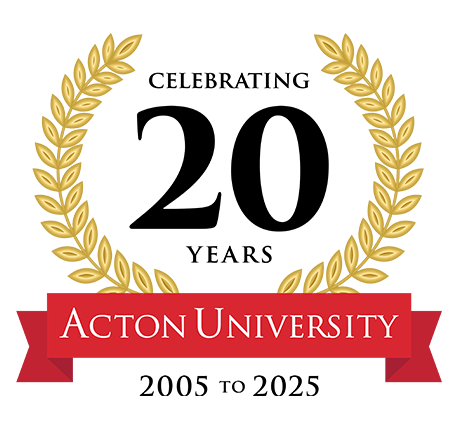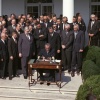“That is never going to amount to anything. Don’t waste your time.”
This was my initial reaction when our Tanzanian director told me about the first savings groups she had seen in action, almost 15 years ago.
“But Scott,” she said, “it is so wonderful to see the women each save 25 cents a week in a metal box.”
To me, 25 cents a week barely seemed worth saving. But I have been proven wrong many times since then. The work has transformed the wealth and self-image of poverty-stricken communities all over the world.
Having worked in grassroots economic development for 27 years, I have seen few interventions work as well as promised. The use of savings groups is one of the very few that has exceeded my expectations every step of the way.
Plant With Purpose – an international ministry that works with subsistence farmers at the intersection of extreme poverty and environmental degradation – had been using microcredit systems to help our clients fund improvements to their farms since the mid-1980s. However, in the early 2000s, we were coming to grips with their shortcomings. Our systems were not particularly efficient; we were a long way from being financially sustainable; and we didn’t always achieve our desired results. Furthermore, our director in Tanzania complained that when she showed up in a community to conduct an agricultural workshop, people would often hide because they felt they owed her money.
She told me about a system that was being used in a neighboring district, where the participants pooled their savings on a weekly basis. Each group consists of 20 to 30 members who go through an extensive training program, during which they begin to save money on a weekly basis. I have heard of groups starting with as little as 10 cents per person per week. They also contribute money to a social fund, which becomes a form of microinsurance that is used to help group members in emergencies.
I had all of the normal questions: Where do they get the money to save? When they only have a few cents, how do they accumulate enough money to be effective? How do they manage their savings?
But to my surprise, the groups flourished. We did some research and learned that the international humanitarian agency CARE had developed this model in Niger in the early 1990s, and we could learn about the system from even more practitioners. Soon, we launched a pilot model in each of our six country programs. Within a few years, we decided to completely phase out our microcredit program in favor of savings groups.
Group procedures are designed for transparency and to minimize the potential for fraud. To enforce these procedures, a system of small fines is implemented, and money from the fines goes back into the fund. This has had the side effect of so changing the group members’ culture that visiting politicians continually remark on their discipline and timeliness at public events.
By the time the training is complete, the members will have accumulated a small but sufficient amount of capital. This can be loaned to group members for such needs as investing in their farm, launching a business, or paying school fees. It is up to group members to evaluate the repayment plan, which might not come directly from the business receiving the financing; payment could come from the proceeds of the harvest, or from produce sales, or any number of other sources.
The groups loan their money at interest, but instead of interest going to fund the operations of the microfinance institution (e.g., for our loan officer, etc.), it accrues to group members’ savings accounts. The members set the interest rate themselves, and it is completely market driven: If the rate is too low, their saving accounts make no money, and if it is too high, no one borrows.
The participants in these savings groups have dispelled my initial skepticism again and again.
The total amount of capital available has grown far faster than I ever imagined. For example, I was with a group in the Dominican Republic a few years ago that had started with an initial savings amount of less than a dollar. When the people realized how fast their money was growing, people looked for any way they could to find money to invest. I was told that people stopped drinking and gambling, so they could save more. Whenever members had a little extra money in their pockets, instead of immediately spending it, they invested it. After 18 months, they raised their minimum weekly savings contribution and had pooled $12,000, which they were managing and investing in their own communities.
However, perhaps the most startling change was the way participants described their success. Over the years, I heard many testimonies from loan recipients in our microcredit program. They were thankful for their loans, but they rarely took full ownership of their success.
However, the savings group members I heard from in the Dominican Republic were excited about what they had accomplished as a community. They told me their whole self-concept had changed. As one woman said, “The only thing we feel bad about is we had these resources all along and never realized it.” I have heard many similar stories from community members, who discovered their own power through participating in savings groups.

An important part of our work revolves around driving home the idea that God gives gifts to every person to use on behalf of His kingdom. We all have the privilege of participating in God’s redemptive work. When group members realize that, not only can they change the future for themselves and their families, but that they were created for a higher purpose, the effect is transformational.
This process has taught us that the group members themselves are our most important allies in extending and sustaining the work. We changed our focus and began to see people as partners rather than projects.
We are by no means the only organization to utilize savings groups. Other organizations have launched hundreds of thousands of similar groups around the world. Nor has this approach replaced traditional microfinancing, which still plays an important role in global development. However, savings groups can provide an amazing tool for those too poor or too remote for a microfinance institution to serve.
Take it from a former skeptic.
(Photo credit: Maren Barbee. This photo has been cropped. CC BY 2.0.)














